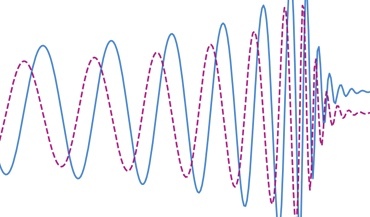 Gravitational memory and spacetime symmetries
Gravitational memory and spacetime symmetries
Symmetries of spacetime infinitely far away from gravitational fields may hint at new laws of nature
In light of the emerging evidence for nanohertz-frequency gravitational waves with Pulsar Timing Arrays (PTAs), I started working as a Senior Scientist at the PTA group at the Albert Einstein Institute (AEI) in Hanover, Germany.
Previously, I worked at the Gran Sasso Science Institute (GSSI) in Italy where I was involved in early stages of planning for the Einstein Telescope (ET), a European gravitational wave observatory of the 2030s. I obtained a PhD degree at Monash University in Australia. Earlier, in 2015, I graduated with a joint BSc-MSc degree from the Physics Department of Lomonosov Moscow State University, where my work was on gamma-ray burst instrumentation.
 Gravitational memory and spacetime symmetries
Gravitational memory and spacetime symmetries
Symmetries of spacetime infinitely far away from gravitational fields may hint at new laws of nature
 The nanohertz gravitational wave background
The nanohertz gravitational wave background
Is the common-spectrum process observed with pulsar timing arrays a precursor to the detection?
 GitHub
|
GitHub
|
 OrcidID
|
OrcidID
|
 NASA/ADS
|
NASA/ADS
|
 Google Scholar
|
Google Scholar
|
 LinkedIn
LinkedIn